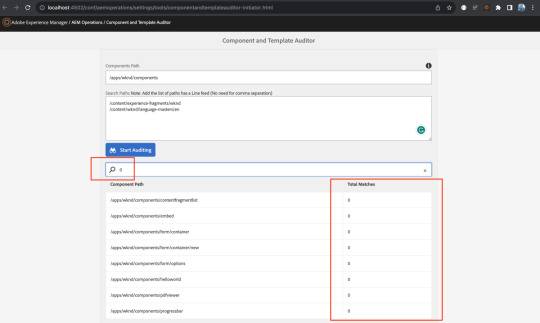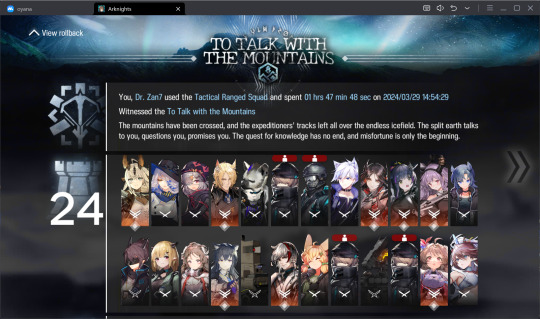#Migration Strategies
Explore tagged Tumblr posts
Text
The EBS Migration Tool is essential for businesses transitioning from Oracle E-Business Suite (EBS) to cloud-based solutions. This tool facilitates a smooth migration process by automating data transfers and ensuring compatibility between legacy systems and new environments. In this comprehensive guide, we delve into the key features of the EBS Migration Tool, outline best practices for a successful migration, and provide insights on troubleshooting common issues. Learn how this tool can streamline your migration efforts and minimize disruptions.
0 notes
Text
UFE ROUMANIE - POT MENSUEL - 13 MAI 2024
Chers membres de l’UFE, Veuillez noter que le pot du mois de mai est décalé d’une semaine en raison du week-end pascal orthodoxe. Il aura lieu le 13 mai à partir de 19h au Sera Eden. C’est l’occasion parfaite pour se retrouver, échanger et partager un moment convivial ensemble. Nous avons hâte de vous voir nombreux ! À très bientôt ! Lundi 13 mai 2024 19.00Sera EdenStrada C A Rosetti…
View On WordPress
#bucarest bucharest bucharestlife expatbucharest bucharestmeetup bucarestfrancais bucharestexpat#expatbucharest bucarestfrancais bucharestmeetup#Événement d&039;annonce#Événement de networking#Événement professionnel#Bucharest Meetup#Communauté anglophone#Communauté d&039;expatriés#Communauté internationale#Digital community#Digital networking#Digital transition#Expats in Romania#expatsinromania#Migration de site web#Migration en ligne#Migration numérique#Migration process#Migration strategies#networking#Networking event#Networking Meetups#Networking opportunities#Nouveau site web#Nouvelle plateforme#Online community.#Online networking#Plateforme de migration#Réseau professionnel#Réseau social
0 notes
Text
Lift-and-Shift Cloud Migration Made Simple! Explore our essential guide for seamless migration strategies.
0 notes
Text
AEM Component and Template Auditor
The "Component and Template Auditor" allows you to analyze your project, identifying components and templates with zero references. This knowledge empowers you to make informed decisions regarding whether to keep or remove them.
Problem Statement: How can we effectively assess whether the components and templates within our project structure are actively used on web pages? This knowledge is crucial for making informed decisions regarding component and template maintenance. Introduction: When organizations undertake AEM upgrades or migrations, they often introduce new components and templates following revised project…

View On WordPress
#Adobe Best Practices#Adobe Recommendations#AEM#AEM Upgrades#Component and Template Management#Component Audit#Component Cleanup#Component Maintenance#Component Optimization#Development Tools#Git Repository#Migration Strategies#Project Maintenance#Project Structure#Template Audit#Template Management#Unused Components#Version Control#Web Development#Web Page References
0 notes
Text
IS4 BN15 Ending 1 done with no progression tree. This certainly isn't the hardest thing I've done, but it is probably is the most stupid.





#arknights#is4#integrated strategies#afaik only 1 person (on CN) has done this so i believe i'm the 2nd person to have done this :D#shoutouts to my oomfie the surprise foldartal#probably about on par with the migrate foldartal that shit is so incredibly fucking busted
18 notes
·
View notes
Text
Top 5 data management mistakes costing UAE businesses millions
Introduction
In an increasingly digital economy, poor data practices have become more than just an IT issue—they are an enterprise-level risk.

Across the UAE, businesses are losing millions annually due to fragmented systems, inconsistent governance, and reactive strategies.
In this article, we’ll unpack five critical data managementmistakes, their tangible costs, and what forward-thinking firms are doing to stay compliant, competitive, and data-resilient in 2025.
1. Fragmented Data Silos Across Departments
While decentralization may speed up local decision-making, it often comes at the cost of data cohesion. Sales, marketing, finance, and operations frequently maintain isolated datasets that never sync—each with its own metrics, definitions, and reporting cycles. The cost? Missed opportunities, duplicated efforts, inconsistent KPIs, and customer insights that are either delayed or distorted due to incompatible sources. Fix: Implement centralized data lakes or unified ERP/CRM systems to bridge these silos. Introduce cross-departmental governance protocols, and enforce scheduled data synchronization to maintain consistency across all business functions.
2. Weak Data Governance and Access Controls
Many UAE businesses still lack formal governance policies. There’s little clarity on who owns the data, who can access it, and how data quality is maintained across systems and touchpoints. The cost? Increased risk of data breaches, GDPR/DIFC non-compliance, unauthorized exposure of sensitive information, and eroded stakeholder trust—especially in sectors like healthcare, finance, and public services. Fix: Deploy a robust data governance framework with clearly defined roles, role-based access controls, automated audit trails, and regular compliance reviews. Embed accountability at every stage of data creation and usage.
3. Overreliance on Legacy Infrastructure
Outdated database architectures, manual Excel trackers, and siloed on-prem systems continue to dominate back-end processes—despite widespread digital front-ends. The cost? Performance bottlenecks during scale, limited real-time data visibility, high IT maintenance overheads, and an inability to integrate with modern analytics or automation tools. Fix: Migrate to cloud-native platforms that support elastic scaling, system redundancy, and embedded analytics. Incorporate APIs for seamless integration with existing digital tools while phasing out legacy dependencies.
4. Lack of Data Quality Assurance
Inconsistent formats, missing fields, outdated records, and duplicated entries remain common issues across enterprise datasets—especially when multiple input sources aren’t standardized.
The cost?
Flawed business reports, poor AI/ML model performance, customer experience setbacks, and incorrect decision-making based on unreliable data.
Fix:
Introduce end-to-end data quality frameworks that include automated validation checks, enrichment protocols, and AI-driven anomaly detection.
Regular audits and cleansing routines should be part of standard operations.
5. Treating Data Strategy as a One-Off Project
Many businesses initiate data initiatives as one-time efforts—an implementation followed by months (or years) of stagnation.
Without ongoing refinement, systems become outdated, and processes lose alignment with evolving business needs.
The cost?
Strategic misalignment, increasing technical debt, and declining ROI on digital investments that fail to evolve with the organization’s goals.
Fix:
Create a living data strategy—an adaptive roadmap reviewed quarterly, driven by key stakeholders across departments.
Tie progress to measurable KPIs like operational efficiency, customer satisfaction, or revenue growth from data-led initiatives.
Turn Costly Data Chaos into Smart Business Decisions: Nordstar Vision
At Nordstar Vision, we help businesses move from fragmented systems to future-ready data ecosystems.
Whether you’re struggling with outdated infrastructure, data silos, or lack of governance, our team brings tailored solutions to help you scale confidently in a data-first economy.
Let’s turn your data into a growth engine.
Reach out to us today at +(971) 50 1108756 or visit nordstartvision.
#data management UAE#business data mistakes#UAE data strategy#data governance UAE#database management Dubai#digital transformation UAE#legacy system issues#cloud migration UAE#data silos#enterprise data solutions#data compliance UAE#Nordstar Vision#data quality assurance#CRM data issues#ERP data integration#UAE business IT risks#data-driven decisions#business analytics UAE#smart data practices
1 note
·
View note
Text
#migrants#poland#finland#migration strategy#polish prime minister donald tusk#temporary suspension of migrants' right to asylum#asylum seekers
2 notes
·
View notes
Text
Door-to-Door Campaigning: Engaging White Women for Kamala Harris
Door-to-Door Campaigning for Kamala Harris Armed with a clipboard and an array of campaign literature, Liz Minnella ventured into the neighborhoods of New Hope, Pennsylvania, fueled by a hopeful spirit that by day’s end, the town would indeed fulfill its optimistic name for Vice President Kamala Harris’s campaign. As she walked along the tree-lined streets, the absence of political yard signs…
#2024 election#Democratic activism#Donald Trump#door-to-door campaigning#election strategy#Kamala Harris#migration concerns#Pennsylvania#reproductive rights#voter engagement#white women voters
1 note
·
View note
Text
The Sigzen Advantage: Innovating Infrastructure Upgrades and Migration Solutions
Sigzen Technologies, a trailblazer in infrastructure upgrades and migration solutions, stands at the forefront of technological innovation. With a rich history steeped in delivering excellence, Sigzen has solidified its reputation as a leading service provider, catering to diverse business needs worldwide.Sigzen prides itself on a comprehensive suite of expertise centered on infrastructure…

View On WordPress
#Digital Transformation Strategies#igzen Tech Revolution#Infrastructure Upgrades#Innovate Your Systems#Innovation Insights#Mastering Infrastructure#Migration Solutions#Smart Systems Upgrade#Tech Evolution Guide#Tech Mastery Tips#Tech Transformation#Upgrade Your Infrastructure
2 notes
·
View notes
Text
Why Azure Cloud Migration Is Essential for Modernizing Your IT Environment

In today’s hyper-connected, data-driven world, traditional IT systems are quickly becoming outdated. On-premises infrastructure, once the backbone of enterprise operations, now struggles to keep up with the growing demands of scalability, performance, agility, and cost-efficiency. As digital transformation becomes a business imperative, organizations are increasingly turning to cloud computing to modernize their IT environments, and Microsoft Azure stands out as a top choice.
Azure cloud migration offers businesses the tools, flexibility, and scalability they need to stay competitive and future-proof their operations. This article explores why migrating to Microsoft Azure is essential for modernizing your IT environment and how it sets the stage for long-term success.
The Problem with Legacy IT Infrastructure
Before diving into the benefits of Azure, let’s understand why legacy IT systems are holding businesses back:
High maintenance costs: On-prem servers require constant upkeep, including hardware upgrades, patching, and security updates.
Limited scalability: Scaling up typically involves purchasing more hardware, which takes time and capital investment.
Slower innovation: Rigid systems make it difficult to adopt new technologies like AI, machine learning, or IoT.
Security vulnerabilities: Older systems often lack modern threat detection and data protection capabilities.
Inadequate disaster recovery: Many businesses struggle with backup and recovery, risking data loss in the event of failure.
Azure provides a more adaptable, affordable, and scalable IT infrastructure that modern enterprises require.
What Is Azure Cloud Migration?
Azure cloud migration is the process of moving your organization’s digital assets—such as data, applications, servers, and workloads—from on-premises systems or other clouds to the Microsoft Azure platform. Azure provides a range of cloud services, including Infrastructure as a Service (IaaS), Platform as a Service (PaaS), and Software as a Service (SaaS), enabling you to run your business more efficiently.
Azure migration can be full (all assets) or hybrid (a mix of cloud and on-prem), depending on your business needs.
Why Azure? A Platform Built for Modernization
Microsoft Azure is more than just cloud storage—it’s a comprehensive platform designed to modernize and transform your IT infrastructure. Here's what makes Azure stand out:
Global Reach: Operates across 60+ regions with data centers worldwide.
Enterprise-Ready: Trusted by 95% of Fortune 500 companies.
Security & Compliance: Offers more than 100 compliance certifications.
Built-In Tools: Includes Azure Migrate, Cost Management, Security Center, and more.
Seamless Integration: Works effortlessly with Microsoft products like Office 365 migration, Windows Server, and Active Directory.
Let’s explore the specific benefits that make Azure cloud migration essential for IT modernization.
1. Scalability Without Limits
Modern businesses face unpredictable growth, seasonal spikes, and fluctuating workloads. You may scale resources up or down in real time with Azure's on-demand scaling.
Launch new apps quickly
Expand globally with minimal setup
Handle traffic surges without performance issues
No more over-provisioning hardware or dealing with capacity constraints—Azure grows with your business.
2. Improved Cost Efficiency
Running your data center is expensive. Azure migration drastically reduces capital expenditures (CapEx) by shifting to an operational expense (OpEx) model.
Pay only for what you use (pay-as-you-go)
Leverage Azure Reserved Instances for predictable workloads and savings
Reduce electricity, cooling, and physical space costs
Azure’s Cost Management + Billing tool also gives you complete visibility and control over your spending.
3. Enhanced Security and Compliance
Security is a top concern when modernizing IT. Azure is built with a multi-layered security model and has one of the broadest portfolios of compliance offerings.
24/7 threat monitoring and detection
Identity and access management via Azure Active Directory
Data encryption at rest and in transit
Support for GDPR, HIPAA, ISO 27001, and more
With Azure, you modernize your IT environment without compromising on security.
4. Accelerated Innovation with AI, ML, and Analytics
Modernization isn’t just about efficiency—it’s about enabling innovation. Azure makes it easy to integrate advanced technologies into your workflows:
Azure AI and Machine Learning tools to enhance decision-making
Power BI for real-time business intelligence and reporting
Azure Synapse Analytics for big data solutions
IoT Hub to connect and manage smart devices
With these tools, businesses can modernize not just infrastructure but also processes and customer experiences.
5. Improved Performance and Reliability
Azure's load balancing and global content delivery network (CDN) capabilities guarantee increased uptime and quicker performance for apps and services.
Azure's worldwide data centers allow apps to run closer to users.
Azure Traffic Manager and Load Balancer prevent slowdowns
99.95% availability with Service Level Agreements (SLAs)
Legacy infrastructure can’t match the performance and resilience that Azure offers out of the box.
6. Streamlined Backup and Disaster Recovery
Outdated systems are often vulnerable to data loss. Azure provides robust backup and disaster recovery (DR) capabilities.
Azure Backup automatically protects your data
Azure Site Recovery enables fast failover during outages
Customizable RTO and RPO options to meet business needs
With Azure, your IT environment is not just modern—it’s resilient.
7. Faster Deployment and Time-to-Market
Azure’s automation tools, templates, and DevOps services help organizations deploy applications faster and bring products to market in record time.
For continuous integration and deployment (CI/CD), use Azure DevOps.
Create infrastructure with ARM templates
Spin up VMs and databases in minutes, not days
Faster deployment means greater agility, a key benefit of modern IT environments.
8. Support for Hybrid and Multi-Cloud Environments
A hybrid or phased cloud strategy is preferred by many companies. Azure supports hybrid and multi-cloud setups, offering flexibility for organizations that want to modernize at their own pace.
Integrate on-premises systems with Azure Stack
Utilize Azure Arc to manage all environments from a single window.
Preserve current investments while implementing a cloud-first strategy.
This flexibility is essential for large enterprises or regulated industries.
Key Steps in a Successful Azure Cloud Migration
Modernization starts with a well-planned migration. Here are the typical steps an organization follows when moving to Azure:
Assessment
Use Azure Migrate to analyze current workloads, dependencies, and readiness.
Planning
Define a cloud strategy—full or hybrid—and identify quick-win workloads.
Migration
To relocate apps and data with the least amount of downtime, use solutions like Database Migration Service and Azure Site Recovery.
Optimization
Post-migration, optimize workloads using cost management, autoscaling, and modern services.
Innovation
Begin integrating AI, analytics, and DevOps to enhance business operations.
Partnering with a certified Microsoft Azure Partner ensures each step is handled efficiently and securely.
Final Thoughts
Businesses that can quickly innovate, scale, and adapt will be successful in the future. Legacy IT systems simply can’t keep up with today’s digital demands. Migrating to the Azure cloud is a business change rather than merely a technological advancement.
From reducing costs and improving security to unlocking new technologies and customer experiences, Azure lays the foundation for a modern, agile, and future-ready IT environment.
If you’re ready to modernize your IT, now is the time to migrate to Azure—and gain the speed, flexibility, and competitive edge your business needs to thrive.
#cloud migration services#azure cloud solution#azure cloud migration#azure migration services#microsoft azure migration#azure migration strategy#cloud migration services companies
0 notes
Text

Legacy systems often power the backbone of enterprise operations, yet their outdated nature poses growing challenges in an age of digital transformation. This blog explores the dual role of legacy infrastructure—its critical function and the risks it brings, including high maintenance costs, security vulnerabilities, and scalability limitations. Learn how businesses can uate legacy system relevance, mitigate risks, and implement strategies such as system decommissioning, data archiving, and migration to modern platforms. With AvenData’s expertise, organizations can turn legacy burden into a launchpad for innovation, compliance, and long-term growth without disrupting essential business functions.
#legacy software systems#legacy system#Legacy Systems#legacy system migration#legacy system migration strategy#legacy software
0 notes
Text
Why UAE Enterprises Are Racing to Modernize Mainframes in 2025

Introduction
United Arab Emirates has become a hotbed of innovation and digitalization. As the government launches ambitious plans such as UAE Digital Government Strategy 2025, Smart Dubai, and National AI Strategy, businesses are being urged to modernize their IT infrastructure at breakneck speed. However, most large institutions, particularly banking, aviation, oil and gas, and government institutions, are still stuck on legacy mainframe systems.
By 2025, mainframe modernization is no longer a distant IT vision but an immediate strategic necessity. This blog explores why UAE businesses are making modernization their top priority, the dangers of stagnation, the optimal methods for change, and how the transition fits into the country’s broader digital aspirations.
Understanding the Role of Mainframes in the UA

Mainframes have been the workhorse of mission-critical activities for decades. Their design enables them to process huge workloads, provide high availability, and process intricate transactions at scale. Mainframes, though old, are still running in most sectors because of their dependability but cannot adapt to current agile technologies.
Use Cases in the UAE:
Banking & Finance: Secure processing of millions of transactions per day.
Government Services: Managing identity records, vehicle registrations, and immigration databases.
Aviation: Airline reservation systems and cargo logistics.
Oil & Gas: Overseeing field operations, logistics, and worldwide distribution.
These systems are heavily entrenched within operational processes. Yet, their antiquity and inflexibility pose huge obstacles in a world of cloud-native applications, real-time data analysis, and customer-focused digital experiences.
What’s Driving the Need for Modernization in the UAE

1. Regulatory Pressures & Compliance: The UAE has rigorous data governance and cybersecurity regulations. With new data privacy legislation like the UAE Personal Data Protection Law and rules by the Central Bank and NESA, old systems lack the ability to provide auditability, transparency, and responsiveness. Contemporary platforms assist in supporting compliance with these changing mandates.
2. Transformation to a Digital Government UAE government has set a priority for digital-first services for every ministry. Legacy infrastructure slows this shift by not having transparent API integration, mobility, and support for automation.
3. Cloud-First Mandate: Programs such as Cloud-First Policy and collaborations with hyperscalers (AWS UAE Region, Microsoft Azure UAE, Oracle Cloud) promote organizations’ migration towards scalable, safe cloud settings.
4. Shrinking Talent Pool: COBOL, PL/I, and other mainframe qualifications are turning into a rarity, particularly in the UAE where the need for cloud, AI, and DevOps professionals is increasing exponentially. Enterprises encounter recruitment bottlenecks and increased expenses when keeping these vintage systems running.
5. Increasing Operating Costs: Keeping legacy infrastructure working in terms of licensing, electricity, physical space, and hardware refresh is far more expensive compared to running on containerized or serverless designs.
6. Customer Expectations: Today’s users are used to instant responses, frictionless digital experiences, and multi-channel interaction — all of which are hard to realize with inflexible mainframe architectures.
7. Integration of AI and Data Analytics: Mainframes are not inherently equipped for real-time data processing or AI workloads. With the UAE opting for smart services, real-time intelligence is not negotiable. Legacy environments don’t possess the flexibility to connect to platforms that enable predictive analytics and automation.
Risks of Not Modernizing in 2025

1. Loss of Competitive Edge: Digital-born competitors will leave traditional organizations behind in introducing new features, rolling out services, and tailoring customer experiences.
2. Security Risks: Mainframes do not support contemporary encryption standards and multi-faceted defenses, posing an easy target for cyber threats and data breaches.
3. Incompatibility with AI & Analytics: Mainframe data tends to remain siloed and hard to extract, process, or visualize, hampering organizations from harnessing AI and predictive analytics.
4. Vendor Lock-In: Proceeding with proprietary mainframe ecosystems results in excessive vendor reliance and low interoperability.
5. Operational Downtime Risks: Older infrastructure makes system failures and outages more likely — potentially disrupting mission-critical services.
6. High Maintenance Costs: Software licensing, minimal upgrades, and specialist maintenance render mainframes an expensive drain relative to elastic cloud infrastructure.
Modernization Strategies for UAE Enterprises

Modernization is not a one-size-fits-all approach. Companies have to assess their legacy environments, risk tolerance, compliance requirements, and budget.
1. Rehosting (Lift-and-Shift): Transfer applications to cloud infrastructure with negligible code changes.
Example: Banking application migration to Microsoft Azure UAE for improved scalability.
Best suited for: Rapid wins without app redesign.
Challenges: Will not exploit full power of cloud-native models.
2. Replatforming: Transition from mainframe OS to newer cloud environments with business logic preserved.
Example: Migrating government services off z/OS onto containerized Red Hat OpenShift platforms.
Benefit: Enhances maintainability and DevOps compatibility.
Challenges: Still has remaining legacy codebase dependencies.
3. Refactoring / Rearchitecting: Re-implementation of legacy applications using new languages (Java, .NET) and de-coupling into microservices.
Ideal for: Long-term flexibility, cloud-native adoption, AI enablement.
Challenges: High development expense and time; requires strategic planning.
4. Replacing with SaaS: Transition to commercial off-the-shelf SaaS offerings that provide similar or superior functionality.
Example: Upgrading legacy CRM to Salesforce or Oracle Fusion in cloud.
Benefit: Reduced TCO and automatic upgrades.
5. Retiring and Archiving: Identify and retire old components no longer supported by business priorities.
Benefit: Eliminates clutter, enhances operational focus, saves costs.
Successful Modernization Case Studies in the UAE

1. Emirates NBD:
Transitioned legacy systems to a real-time API-based platform.
Facilitated mobile-first banking and customer customization.
Cut IT operations cost by 35%.
Accelerated feature deployment cycle by 60%.
2. Dubai Smart Government:
Transferred services from proprietary legacy infrastructure to cloud-based scalable microservices within UAE-based data centers.
Enhanced access to public services by 60%.
Launched digital payments and identity systems connected with AI.
3. Abu Dhabi National Oil Company (ADNOC):
Upgraded refinery and logistics management systems using Microsoft Azure.
Implemented predictive analytics and IoT solutions.
Cut downtime occurrences by 45%.
4. Etihad Airways:
Transitioned away from legacy ticketing systems to real-time digital platforms.
Facilitated smooth booking experiences and live customer support.
Scaled seamlessly to meet peak global traffic.
Step-by-Step UAE Enterprises Modernization Roadmap

1. Assess and Inventory:
Review all applications and dependencies.
Utilize tools such as CAST Highlight, Micro Focus, or IBM ADDI.
2. Define Business Priorities:
Identify business-critical workloads and modernization priorities (cost, compliance, agility).
3. Select the Right Approach:
Select rehosting, refactoring, or hybrid approach according to risk and complexity.
4. Engage Local Expertise:
•Collaborate with UAE-headquartered cloud partners who are aware of local regulations, hosting laws, and compliance.
5. Governance & Training:
Define modernization KPIs.
Skill up teams in DevOps, security, and cloud-native design.
Create agile pipelines for accelerated delivery cycles.
6. Pilot, Scale, and Optimize:
Pilot with low-risk applications.
Iterate and optimize performance and costs.
Utilize continuous testing and CI/CD pipelines to enable seamless transitions.
7. Regulatory Alignment:
Ensure all modernized systems comply with NESA, PDPL, and sector-specific compliance regulations.
Utilize cloud regions that provide data sovereignty in the UAE.
How Impronics Technologies Can Assist

Impronics Technologies offers expertise in legacy-to-modern transformations, which are specifically designed for the UAE market. Our consultants:
Perform in-depth mainframe appraisals
Create cloud migration strategies
Re-architecture mission-critical applications for Kubernetes, Azure, or AWS
Provide compliance-first architectures that conform to UAE legislation
Our in-country expertise includes:
Banking & Finance: PCI-DSS compliant new-generation banking platforms
Government: Secure, API-ready e-government infrastructure
Oil & Gas: Predictive maintenance through IoT modernization
Let’s create the future of IT in the UAE — beginning with your legacy systems.
Conclusion
As digital transformation becomes increasingly rapid throughout the UAE, businesses can no longer afford to be held back by legacy infrastructure. Mainframe modernization is not an issue of technology alone — it is a differentiator for competitiveness, a compliance imperative, and an enabler of innovation.
Whether you’re a bank looking to innovate with AI, a government agency moving toward Smart Nation goals, or an enterprise seeking operational agility, modernizing your legacy systems is the first step toward future-readiness.
Don’t let the past hold your enterprise back. It’s time to modernize, transform, and lead.
Must Visit - www.impronics.com
#Mainframe Modernization#Legacy System Migration#Digital Transformation UAE#Cloud Migration Strategies#Enterprise IT UAE#UAE Tech Trends 2025#Modern IT Infrastructure#DevOps UAE#Cloud Computing UAE#Government Digital Transformation#UAE Enterprise Solutions#Application Modernization#Smart Government UAE#Cloud Adoption Middle East#IT Compliance UAE
0 notes
Text
Bihar’s 35% Quota Restriction: A Political Move or True Empowerment?

The Bihar government recently decided to restrict the 35% quota for women in government jobs to only those who are permanent residents of Bihar. This decision, taken just months before the 2025 state assembly elections, has created a wave of debate across the state and beyond. While the government claims this move will empower local women and provide them with greater financial independence, a deeper look into Bihar’s condition reveals that the story might not be as straightforward as it seems.
#Bihar women quota 2025#35% reservation Bihar#Bihar domicile rule#Nitish Kumar quota move#Bihar elections 2025#Bihar women jobs#Bihar youth commission#Bihar reservation politics#Bihar migration issue#Bihar unemployment rate#Bihar women's empowerment#Tejashwi Yadav 100% domicile#JD(U) election strategy#Chirag Paswan Bihar jobs
0 notes
Text
#Cloud Consulting Services#Cloud Strategy and Transformation#Digital Transformation Strategy#Cloud Migration Experts#Enterprise Cloud Adoption Services#Cloud-Native Application Development#Digital Transformation Consulting#Custom Web Development Company#Enterprise Content Management Solutions#Cloud-Native Development Services#Product Engineering Services#technology#digital transformation#successive.tech#successive digital#artificial intelligence#customer experience#techblog#customer experience consulting company#blog#customer experience transformation company
0 notes
Text

Discover cloud migration strategies, key components, and benefits that help businesses reduce costs, enhance security, and fuel digital growth.
1 note
·
View note
Text
End-to-End Digital Transformation: Strategy, Services, and Cloud Migration
Connect your applications and accelerate your digital transformation and business development initiatives with Integration connectivity as service capabilities provided by the Smarter Integration Platform. Integration Connectivity as a Service (ICaaS) is a low-code, cloud-based digital integration solution. Our integration experts have developed the Smarter Integration platform to leverage this cutting-edge technology and deliver our clients the fastest, most reliable, and cost-effective integration solution available. Smarter Integration represents the next generation of enterprise integration for the digital age.
Digital transformation Services
Digital transformation services help businesses grow and flourish in the digital age by enabling them to use technology to change their processes, operations, and customer experiences. Solutions in this category include custom software development, cloud migration, process automation, data analytics, cybersecurity, and collaboration tools. The goal is to implement major changes in a number of business domains that will improve customer experiences and boost efficiency and agility.
Digital Transformation Strategy
A digital transformation strategy is a detailed plan for using digital solutions to improve the physical aspects of your business across engineering, manufacturing, and service. Digital transformation is, in and of itself, a broad business strategy. The essential foundation is developing a roadmap for both short—term and long-term digital transformation, guided by business outcomes rather than technology. Companies of all sizes achieve enviable business outcomes from digital transformation efforts, including improved efficiency, maximized revenue growth, and reduced operational costs.
Cloud Migration
Cloud Migration is the process of moving data, applications, and other business elements from on-premise infrastructure or traditional data centers to a cloud environment. This migration can involve a variety of activities, including moving data storage, servers, applications, and even entire IT infrastructures to the cloud. It is a crucial step for businesses seeking to modernize their IT systems and fully leverage the cloud's benefits, including real-time processing, enhanced scalability, and on-demand resources.
1 note
·
View note